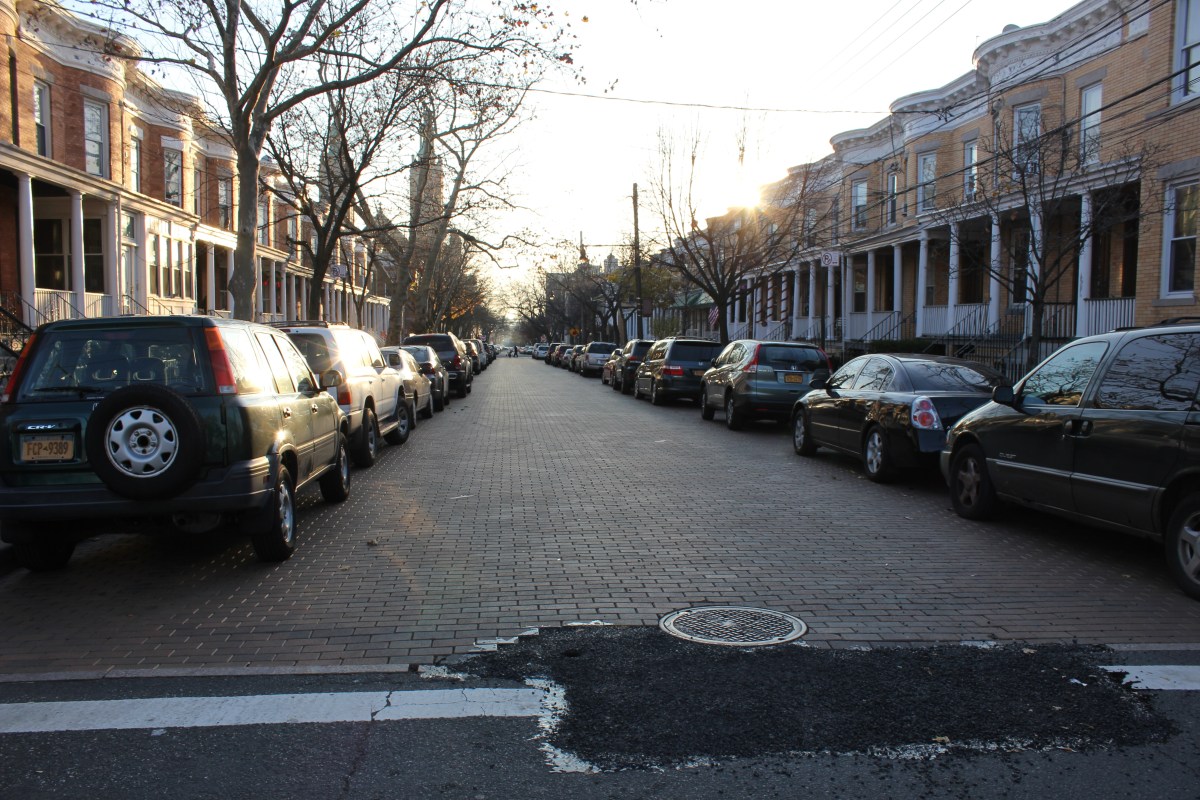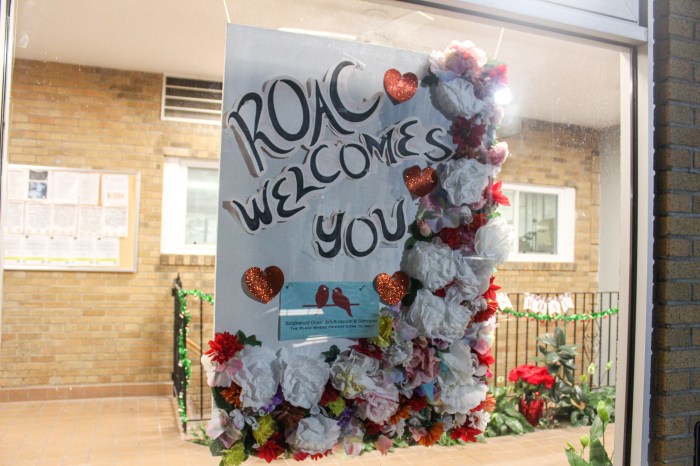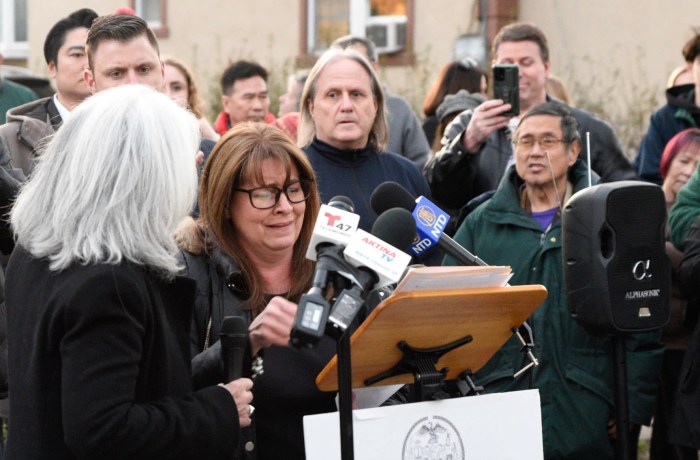BY KELLY MARIE MANCUSO
Ridgewood residents and community leaders are fighting to repair and preserve a portion of the landmarked brick-lined section of Stockholm Street following a partial cave-in near a manhole.
Lovingly dubbed the “yellow brick road” by local historians, this cozy yellow cobblestoned street located between Onderdonk and Woodward avenues is home to nearly 40 expertly preserved homes, each built between 1907 and 1910 with iconic yellow bricks from Kreischer Brick Manufacturing Company of Staten Island. The Stockholm Street Historic District, including the brick roadbed, was officially designated in 2000 by the city Landmarks Preservation Commission.
Stockholm Street resident and Newtown Historical Society president Christina Wilkinson observed uprooted, crumbling bricks along portions of the roadway, as well as the crosswalk cave-in, firsthand. Wilkinson initially reported the cracked roadbed and unsafe conditions to 311 back on June 27.
The Department of Transportation (DOT) closed out the complaint, claiming that Wilkinson’s request was investigated by the agency and is considered a capital reconstruction project. In a response to Wilkinson’s original 311 report, the DOT stated that the location is part of an existing project, or may be included in a long-term, future project which can vary in length and duration.
“It’s a difficult situation simply because it’s a brick paved street,” Community Board 5 District Manager Gary Giordano said. “The manhole structure, I believe, is the cause of the problem.”
Giordano believes that erosion of the cement between the bricks near the sewer and manhole structures may be the underlying cause of the cave-in on the roadbed’s surface.
“We’ve got to fix this cave in,” he added. “They have to repair the manhole structure, and then back fill and compact the soil. We have to get it up to grade level before we consider replacing the bricks.”
On Friday, the DOT arrived on the scene and temporarily patched the bricks with black asphalt at the site of the cave-in. A nearly 4-foot-deep hole, however, still exists in the asphalt, leaving Wilkinson and many residents to wonder when the unsafe condition will be repaired permanently.
“When you look down into it, you can see where the missing bricks were,” Wilkinson said.
Both the Newtown Historical Society and CB 5 members are fighting not only to repair the sinking condition in the street, but to restore and preserve the historic roadbed as well.
“It’s a street that we, the community board, pushed to get reconstructed,” Giordano added. “I am trying to get the DOT to not just put asphalt there, but to replace the brick and cement it, which is not what they normally do.”
According to Giordano, CB 5 pushed for one-way status for Stockholm Street in an effort to preserve repairs made by the nearly $700,000 capital funded reconstruction project completed back in the 1990s. The project included the installation of a new sewer line below a new concrete roadbed base topped with the iconic golden bricks.
A spokesperson from City Councilman Antonio Reynoso’s office echoed these concerns and vowed to look into the matter.
“Independent from being a landmark, anytime there is street repair or safety issue, we want to put pressure on city agencies to make any repairs possible,” stated Reynoso’s Chief of Staff Jennifer Gutierrez. “Anytime there’s an unsafe street condition, we definitely want to encourage residents to call 311, and then to call us.”
According to a DEP spokesperson, a crew will be dispatched to ensure that the water and sewer infrastructure at this location is operating properly. For Wilkinson and other residents, however, the ongoing conditions and lack of viable response has left them frustrated and seeking answers.


































